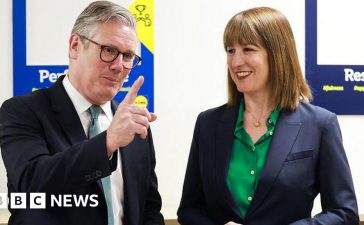Receive free Renewable energy updates
We’ll send you a myFT Daily Digest email rounding up the latest Renewable energy news every morning.
One of Britain’s largest onshore wind developers has said it is halting development of its biggest project to date due to rising costs and the government’s windfall tax on green power.
Community Windpower won planning permission in August for a new wind farm in southern Scotland capable of producing enough electricity to power about 350,000 homes — making it the fourth-largest onshore wind project in the UK.
However, the Cheshire-based company said an 80 per cent surge in the Sanquhar II project’s development costs, from £300mn to £550mn, over the past two years, combined with a new tax on clean electricity generators, meant it was not possible to proceed.
It is the latest blow to the development of renewable energy in the UK after offshore wind developers also held back projects after complaining the UK government has not done enough to take into account rising costs.
Swedish developer Vattenfall halted a development in the North Sea in July, saying it was no longer viable under the fixed electricity price it had agreed with the government in July 2022, after its costs surged 40 per cent.
Rod Wood, managing director and owner of Community Windpower, said: “We’ve run the financial models . . . We cannot get the return on capital that we need to cover the bank requirements for financing.
“We’re having to pause. It’s a huge missed opportunity. We need energy security, we need wind power. It’s all there, good to go . . . But we can’t make it work, unless the economics change.”
Sanquhar II, about 50 miles south of Glasgow and the company’s largest project, was intended to be fully up and running in early 2026.
The government introduced a windfall tax on low-carbon electricity generators last year following a surge in electricity prices due to energy market turmoil linked to Russia’s war on Ukraine.
Wood said the windfall tax was a “huge obstruction” to new investment in the UK and accused the government of “[refusing] to listen” to warnings from industry about cost pressures. “Considering the urgent need for more renewable capacity, it’s a total policy failure,” he added.
Meanwhile, the government’s latest annual auction round for contracts for state support for clean energy attracted no bids from offshore wind developers, who warned that the ceiling price was too low.
Costs for wind power have risen for everything from cables to turbines and financing, with wind developers particularly vulnerable to high interest rates as they have high-up front costs.
Ministers have been sensitive to requests from developers for financial breaks that could hit consumers at a time of high inflation.
Rishi Sunak, prime minister, cited costs as he last week relaxed plans to phase out fossil fuel cars and boilers, saying “it cannot be right for Westminster to impose such significant costs on working people”.
The Electricity Generator Levy, which runs from January 2023 until the end of March 2028, is a 45 per cent levy on revenues from electricity sold above £75 per MWh. This threshold will be indexed to inflation from April 2024. The day-ahead electricity price in the UK is about £96 per MWh.
It applies to projects, such as Sanquhar II, which plan to sell their electricity under market rates without government support.
Energy UK, the energy industry trade group, said in June that the tax “[disincentivises] the very technologies that will help insulate the UK from future energy price crises”.
Community Windpower has previously threatened to sue the government over the windfall tax unless alterations were made, claiming it was “discriminatory” because it is not applied to gas-fired and coal-fired power plants.
Wood declined to comment on whether the company was still planning to take legal action.
The Treasury said: “The continued investment by generators in the industry is vital to our long-term energy security and this levy still leaves companies with a share of the upside they receive at times of high wholesale prices.”











